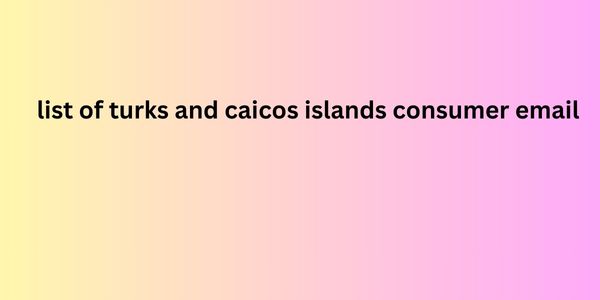Digital advertising in its early days was not very different from traditional advertising in that it was not known who received it or the impact it generated.
Let us remember the flashing banners advertising products that had nothing to do with us.
Download Now: How to Determine if list of turks and caicos islands consumer email Your Campaign Was Successful [ebook]
This type of advertising can be annoying, intrusive and no more effective than handing out flyers on the street to any passerby.
Over time, ads have been able to reach the right audiences through segmentation, offering information that the audience is willing to receive with pleasure thanks to native advertising .
What is native advertising?
Native advertising integrates the ad into the content of the website or blog on which it appears, respecting its format, editorial line and theme, making it relevant to its readers.
By being displayed as part of the content, native advertising helps the brand or company gain credibility with the public. This can be done in a closed or open form. The first is integrated into the content and editorial format of a specific online site , for example, sponsored blog articles.

The second promotes content on various channels that have a similar theme through specialized native advertising platforms, for example, search engine ads.
It is common to see a series of articles at the bottom or in the sidebars of certain sites. Many times these are advertisements placed through platforms, such as Adyoulike , Sharethrough or Outbrain, which appear to be part of the content, but redirect to the advertiser's site.
In recent years, in the United States, this advertising has shown a sustained growth of 25% and is expected to continue like this, thanks to current consumer behavior.
It is important to mention that, for ethical reasons, native advertising always indicates to readers that it is advertising information.
Native advertising trends
· Advertising in the social media feed
Consumers spend a lot of time on social media these days, and this can be leveraged. For example, Facebook NewsFeed advertising has been integrated into each user's news feed updates, adapting to their interests and without affecting their browsing, thus encouraging users to open their feed.
The trend is to create new creative formats that adapt to the feed of each social network.
· Mobile advertising
Smartphone usage continues to increase over the years. According to data from Statista , in 2014 there were barely more than 1.5 billion users and by 2019 the figure is expected to reach 2.6 billion users.
It is also estimated that by 2020 , 63.6% of mobile advertising spending will be for native advertising.
· Greater diversification
Native advertising advertisers continue to look for new, creative ways to present their content to consumers.
Formats such as video , new platforms and partnerships with influencers that help position your brand, among others, are managing to create connections with consumers that traditional methods no longer achieve.
· Personalization
Brands have discovered that users prefer to receive content tailored to their particular needs and tastes and to be addressed by their name.
According to a study by Segment, 71% of consumers show some degree of frustration when brands do not offer personalization during a purchase process.
Thanks to pragmatic media buying, companies can publish an advertisement that includes specific information for the user who will see it, in real time, in the right place and at the right time.
In short, native digital advertising allows you to reach the right audience in a friendly way, since it does not interrupt browsing and provides information that interests them, at the right time.
